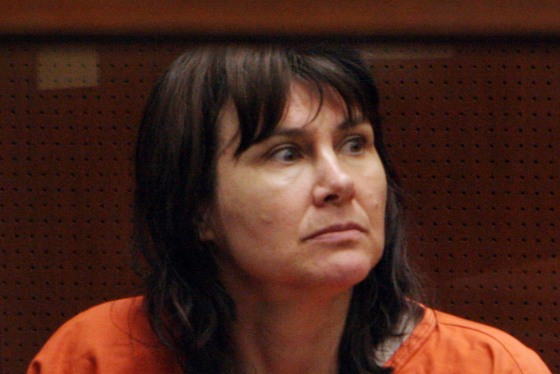A former Los Angeles police detective who killed a romantic rival and concealed the murder for more than two decades won’t be paroled, reversing an earlier decision that found she was suitable for release, a lawyer for the victim’s family said Wednesday.
In a statement, a spokesperson for the family of victim Sherri Rasmussen said Stephanie Lazarus' grant of parole was reversed after a 90-minute hearing before three commissioners from the California Parole Board.
Family lawyer John Taylor said Rasmussen's relatives were pleased with the decision.
“Lazarus had her parole time up front, evading arrest for 23 years after the murder,” Taylor said in a statement. “She has expressed no remorse for the cold-blooded execution of Sherri Rasmussen committed while she was an LAPD officer. It’s unfair to the family that she should now go free and enjoy her life while receiving her LAPD pension.”
A spokesperson for the California Department of Corrections and Rehabilitation, the board’s parent agency, said a panel that was reviewing the earlier decision found "good cause" to rescind it. Lazarus will have a new parole hearing within 18 months of Nov. 13, 2023, when she was previously granted parole, spokesperson said.
A lawyer for Lazarus didn’t immediately respond to a request for comment.
Rasmussen, 29, a nurse, was gunned down in her Los Angeles-area apartment on Feb. 24, 1986. Lazarus, a Los Angeles police art theft detective who was then an officer in her mid-20s, previously dated a man whom Rasmussen married.
The lead investigator in the case has said Lazarus entered Rasmussen’s condo unit, struck her in the head with a vase and shot her three times in the chest using a pillow as an improvised silencer. She then staged the killing to look like a robbery, the investigator, Greg Stearns, previously said at a parole hearing for Lazarus.
DNA left at the crime scene later linked Lazarus to the killing. She was arrested in 2009 and convicted of first-degree murder three years later, after having asserted her innocence at trial.
Lazarus was found suitable for parole after a hearing in November by a commissioner who partly cited her young age at the time of the killing — recent California legislation has sought to shift how people under age 26 are handled in the criminal justice system — and said Lazarus didn’t pose a risk if she were released, a transcript of the hearing shows.
Rasmussen’s family challenged that finding, saying Lazarus didn't appear remorseful and questioning why the board relied on the state’s youthful offender law in her case.
At the time of the killing, Lazarus, who was then almost 26 and had been a police officer for two years, had passed psychological evaluations that allowed her to become a police officer and carry a gun, the family said.
At the November hearing, Lazarus said she had no intention of killing Rasmussen when she went to her home, according to the transcript. She said she had gone to the couple's home to talk to her ex, who wasn’t there at the time of the killing.
Lazarus said she didn’t turn herself in afterward because she was ashamed, according to the transcript.
After the board found Lazarus suitable for release, California Gov. Gavin Newsom said that while she had an excellent disciplinary record and had sought to improve herself behind bars, she hadn't begun to take full responsibility for the murder until she was caught.
A separate panel that cited Newsom's letter said the decision to release Lazarus deserved additional scrutiny because it may have been "improvident."
